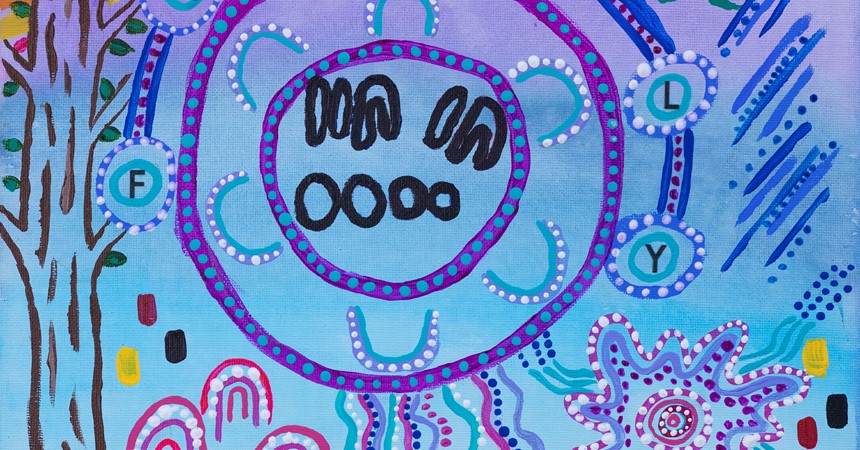The true essence of Aboriginal art is to record knowing of Country; the resources that it provides such as food, water and shelter; the way it changes through the seasons; family connection to place; the poetries and songs of the story; and its relationship to the artist.
Traditionally Aboriginal art was noted in sand, carved in trees, etched into stone, painted on walls and on artefacts. Having the honour to really know Country, you would sing the poetry and wear the paint with pride on your body as you participated in the ceremony. However, due to forced removal of Aboriginal people and the subsequent denial of speaking languages, much of this knowledge and cultural practice has been erased from history.
Today, we are in a season of revitalisation. Our cultural storytelling has evolved.
Nowadays, much Aboriginal art is created using acrylic paint on canvas. Importantly, while the materials commonly used have changed, the articles are no less significant in noting the intimacy of Country story and song. The artworks are still rich in knowledge and hold true to the cultural purpose of art and story.
Art created by Aboriginal artist, Albert Namatjira, has been critised by many who hold the belief that his approach should not be considered “Aboriginal art” as it was not in keeping with cultural styles that were typical of the 1900s, in terms of depiction or use of materials. However, as we now know, true Aboriginal art is story telling. It is not the medium or even the technique. In his paintings, which feature landscapes in fine art, Namatjira was holding the essence of stories. They are a record of the Country he intimately knew; his visual stories reflect his understanding of the light refraction at different times of day, the hues, the colours and the curve of every boulder.
While Aboriginal art continues to evolve and take on various forms, I encourage you to not appropriate it. Each artwork should be unique and reflect stories and song that have been handed down through bloodline. This principle is important as it is not your place to tell someone else’s story; and applies to both Aboriginal and non-Aboriginal people. Instead, I invite you to create art that is inspired by your experiences and relationships.
Learn Country, let Country talk to you and teach you. This is the essence of Aboriginal art.
Cherie Johnson is a proud Gamilaroi and Weilwun woman, and is an active member of the Awabakal community. Cherie founded local organisation, Speaking in Colour, and consults on matters including Aboriginal arts and education.
Artwork accompanying this story is by Milla Turner and is entitled 'Home.'






















































































